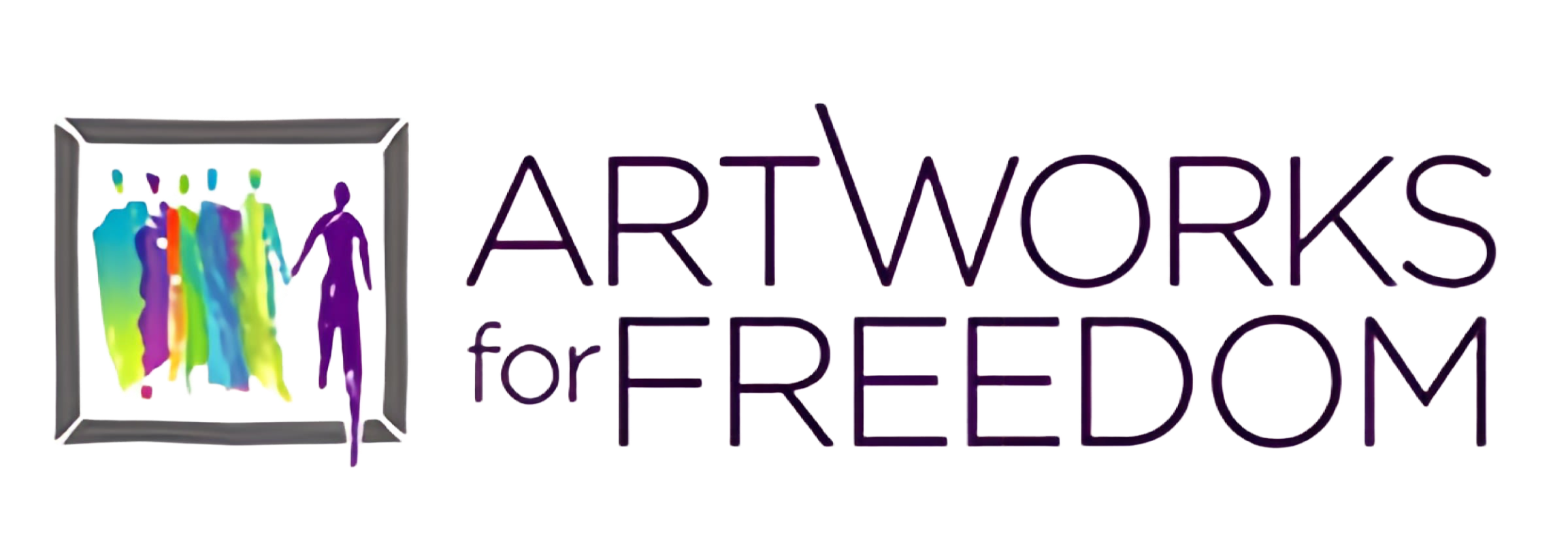By Michele Clark, Executive Director, ArtWorks for Freedom

Michele Clark
This month, ArtWorks for Freedom chose to take a look at the issue of human trafficking and business supply chains, asking ourselves: With such a complex issue, how can people make a difference toward eliminating slave labor in the making of products we buy every day?
When we read about forced labor in agriculture, fishing, clothing and other industries, it is easy to become overwhelmed by the enormity of slave labor’s infiltration in the chains of products we buy. With an issue so big and complex, it is also easy to feel we have no power to bring about change. But, I’m convinced that even the smallest actions make a difference toward a great end, which is why ArtWorks provided four tips for learning about and addressing supply chain transparency in our monthly newsletter for October. For my first post on our new ArtWorks for Freedom blog, I wanted to elaborate on these tips a bit further. But first, let’s look at the question:
When it comes to supply chain awareness, how complicit are we?
In trying to find an answer, it seemed only fair that I put my own purchasing habits under the microscope. I decided to take the survey on slaveryfootprint.org to learn, “How many slaves work for me.” As defined by the website, a slave is, “Anyone who is forced to work without pay, being economically exploited, and is unable to walk away.”
I assumed that the answer would be small, perhaps a handful, at the most. To my surprise, the number came back at 45. I was shocked! After all, I have spent the past 15 years combating human trafficking and modern day slavery in my personal and professional life. Did the makers of this quiz sensationalize their findings just to make me feel guilty, send money, volunteer or join their organization? Or was there another answer…that I am not fully aware of the relationship between my food, clothes, material possessions and human trafficking in the modern world.
To learn more about the intersections between my lifestyle and modern day slavery and to understand the degree of my own involvement I decided to take a closer look at the quiz. Conveniently, the website offers an explanation of their its methodology, which states a person’s total slavery footprint, “…represents the number of forced laborers that were likely to be involved in creating and manufacturing the products you buy.” To that end, I was asked my age, about my home and activities, the food I consume and the possessions I own, including clothing, electronics and jewelry, all of which have an impact on how many slaves work for me.
This slavery footprint points to how deeply embedded forced labor is into the most basic products of our lives. Yet, determining the precise point where slave labor figures into the production of goods we use is difficult. While the final distributors of our clothes, food or electronics might follow a code of ethics and adhere to best practices for corporate social responsibility, those same goods may have been harvested, manufactured or transported using exploited labor. So at what point are the distributors responsible? Moreover, when do we, the buyers, need to accept some of the blame?
An awareness of the complexity of supply chains makes the problem easier and, at the same time, more challenging. Easier, in that greater awareness will hopefully yield greater demands to stamp out slave labor. The challenge, of course, is that for individuals, greater awareness makes our personal choices more complicated. Which leads back to my original question—how complicit are we? I would argue we are part of the problem when we know about it and choose to look away. Thankfully, we don’t have to.
There are measures we, as individuals, can take to demand an end to slave labor in the supply chains of products we buy, and we can even fit these actions into our busy and hurried lives. With just an hour of your time, you can make a difference by:
- Staying informed and sharing information: Many people simply do not know the scope of forced labor and how often it intersects with the goods they buy. Raising the awareness of those around you is a critical step that can’t go overlooked. Visit the United States Department of Labor, Know the Chain, Free2Work and other organizations that focus on human trafficking in supply chains to learn about the issue and begin sharing information with your friends and colleagues.
- Supporting supply chain legislation: The Business Supply Chain Transparency on Trafficking and Slavery Act of 2015 (S. 1968), companion to H.R. 3226, championed by Rep. Carolyn Maloney (D-NY) and Rep. Chris Smith (R-NJ) was introduced by Senators Richard Blumenthal (D-CT), Co-Chair of the Senate Caucus to End Human Trafficking, and Edward J. Markey (D-MA). This bill would require public companies with annual worldwide receipts above $100 million to disclose the measures taken to identify and address conditions of forced labor and human trafficking within a company’s supply chains. Read the bill and call your congressional representatives’ office to learn their stance on the issue.
- Purchasing goods and services from companies that promote ethical employment practices: Spend an hour with a group of friends researching a company’s supply chain all the way to the top. If you don’t like what you learn, present this information to the company’s office of public information and ask what they intend to do. Gain their support in the war against human trafficking.
Tackling the slave labor in the making of our consumer goods is a massive task, to be sure. However, the immensity of the problem doesn’t absolve us from responsibility to act. Bit by bit, we can raise the level of alarm on this issue so that it can no longer remain ignored.








Leave a Reply
Want to join the discussion?Feel free to contribute!